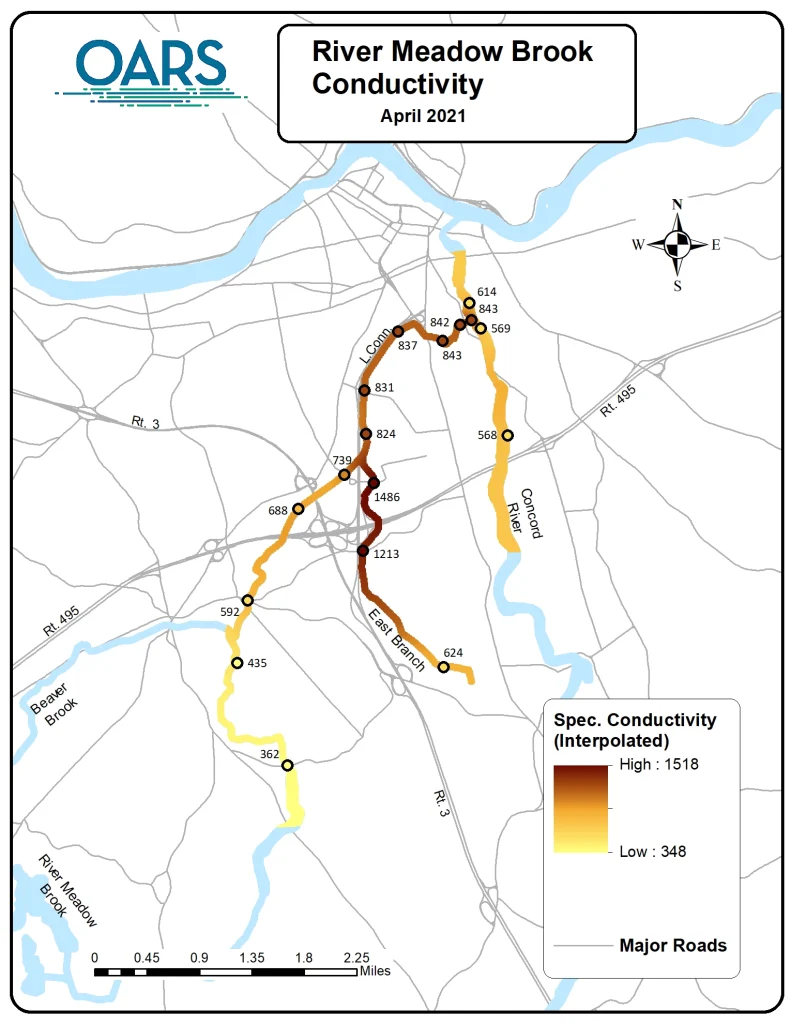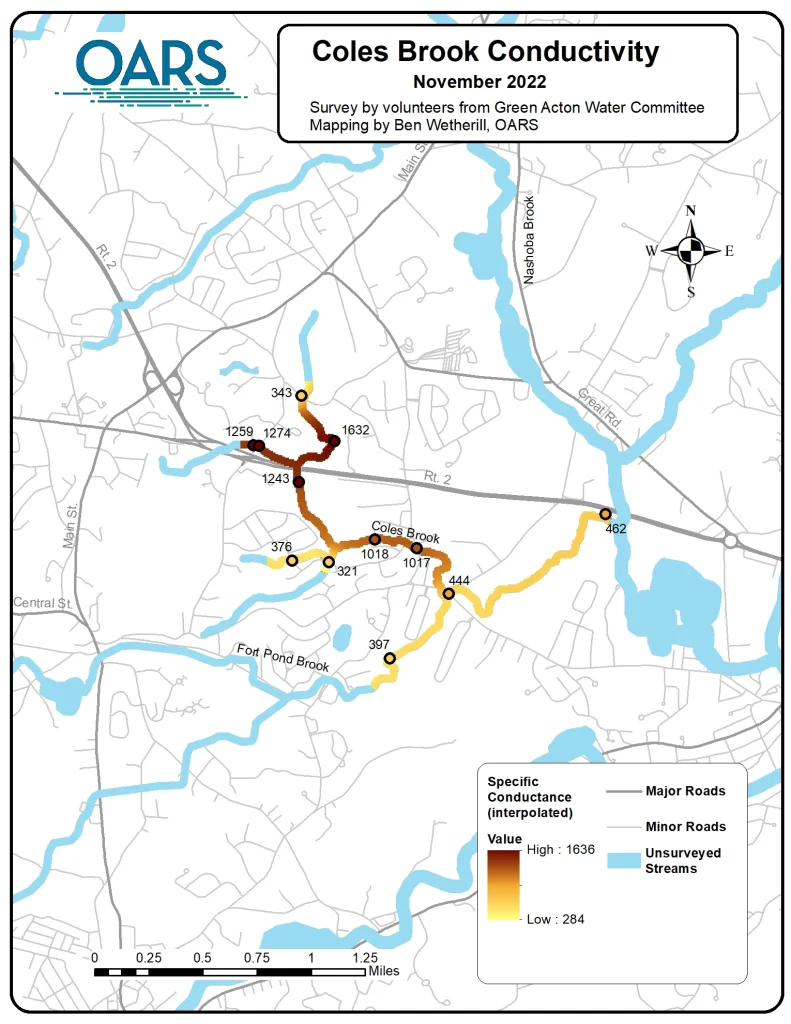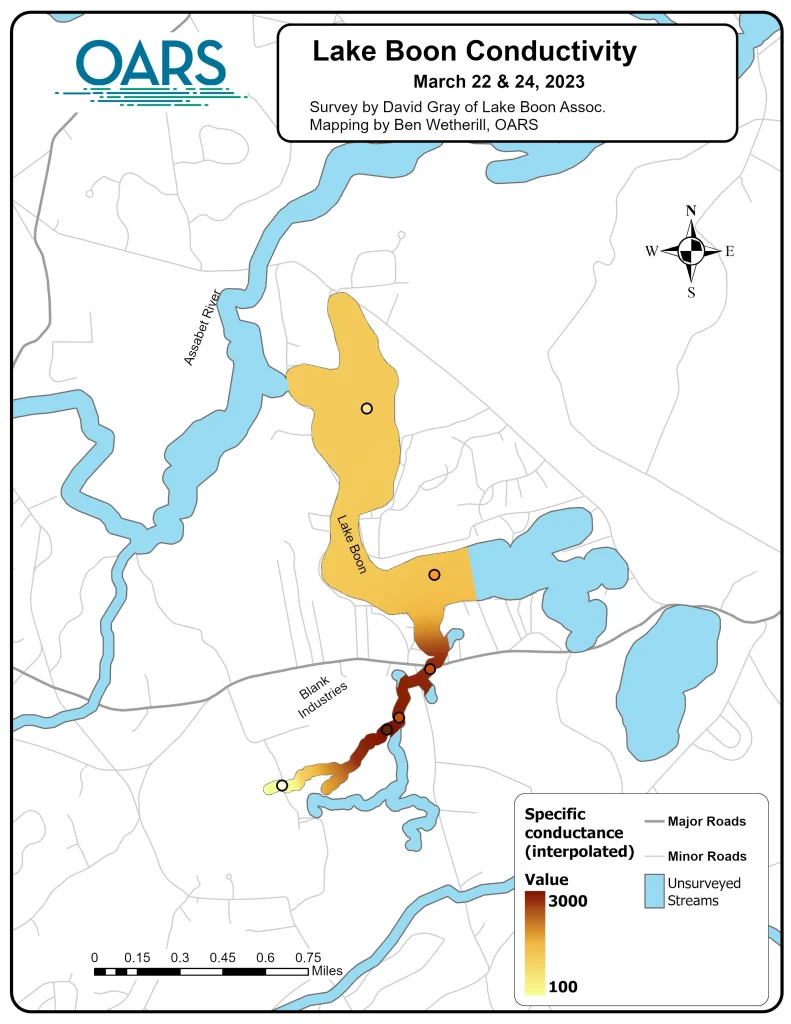Conductivity and Chloride
During the winter, salting roads in New England helps make travel easier in the snow, but it negatively affects our rivers and streams. High salt levels in rivers and streams can harm freshwater life. The EPA has set a limit for chloride (a central component of road salt) to protect freshwater aquatic life. Road salt can also adversely affect groundwater, and in Massachusetts, public and private wells have been contaminated by road salt runoff. OARS has been monitoring salt levels in the watershed to address these issues for several years. We measure chloride in water samples to directly assess salt concentrations and monitor in-situ conductivity, a cost-effective way to estimate chloride levels.
Our studies show chloride pollution in the SuAsCo rivers is not uniform. While there are many river sections where chloride levels are low enough to be safe for aquatic life, our monitoring documents many locations where chloride levels are too high. Roadways, parking lots, and developed areas often result in concentrated chloride pollution that degrades segments of the rivers. Identifying these locations can help find and address the sources of pollution. OARS has been leveraging the fact that chloride is closely correlated with conductivity, which is very easy to measure with handheld meters. Likewise, it is straightforward to conduct a stream survey of conductivity levels from the source of a stream to its mouth. Such a survey can identify conductivity hotspots and infer chloride hot spots. OARS recruits members of our water quality monitoring volunteer community to conduct these surveys in streams or brooks with which they are familiar. So far, three volunteer groups have been conducting surveys. Read all about this work in our conductivity survey report and view our current locations of study in the surveys map below.







